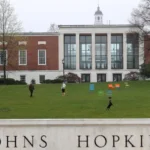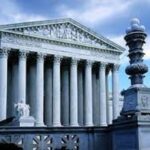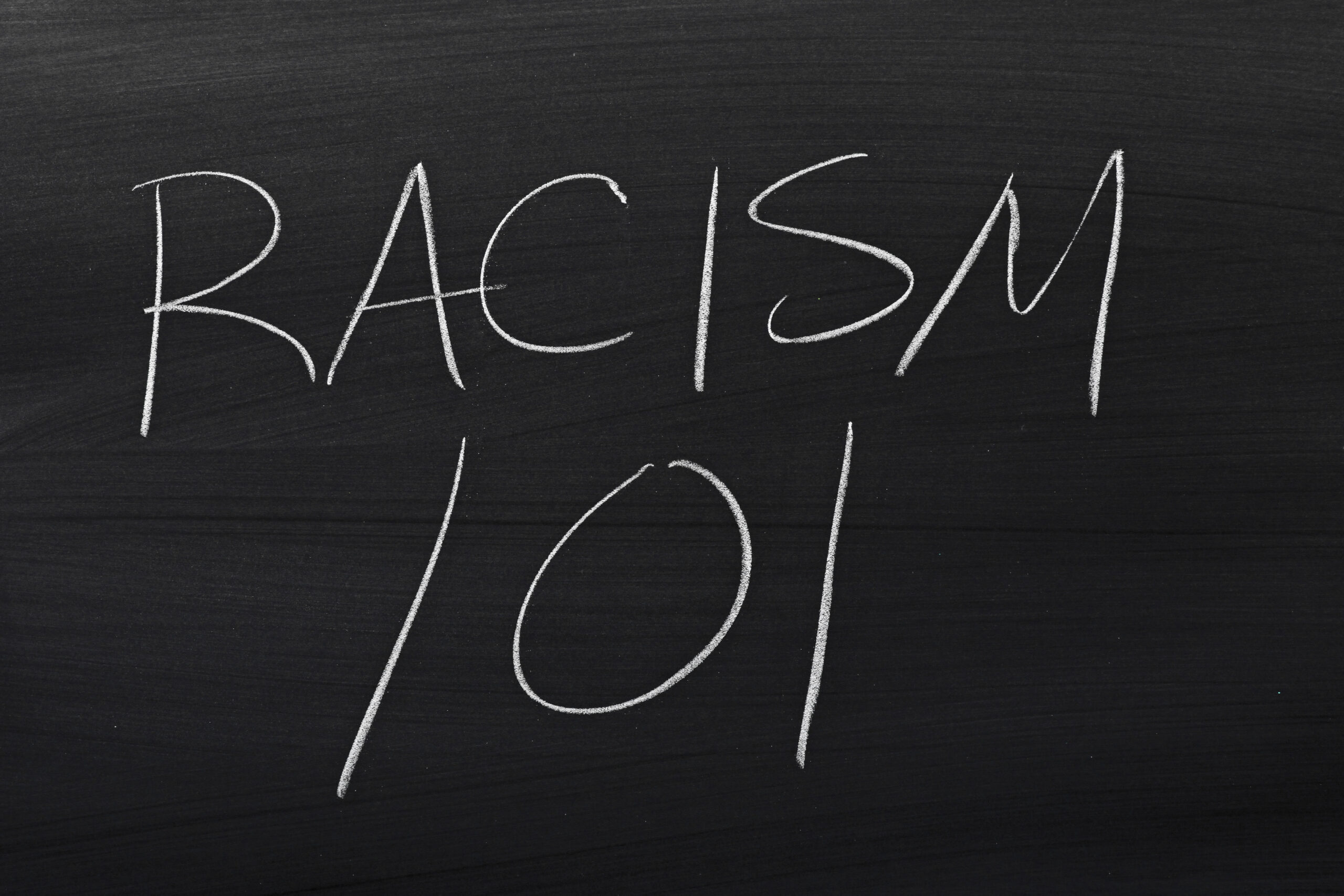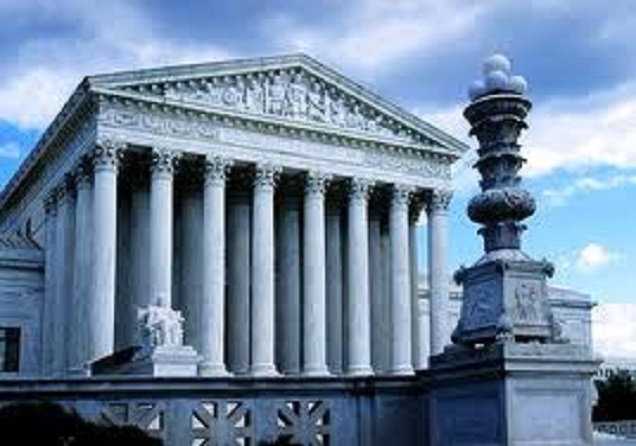U.S. Supreme Court
At times, some have referred to the Supreme Court as “nine scorpions in a bottle.” That metaphor seems especially appropriate this year, though I would describe them as “nine angry scorpions in a bottle.” There is a strong sense that it is a deeply divided court. There were a total of 59 opinions, and 23 were 6-3 and another five were 5-4.
Of course, the most apparent division was between the six conservative justices and the three liberal justices, and that split was crucial in some of the most important cases, particularly at the end of the term. Then there were the 6-3 decisions with Justices Clarence Thomas, Samuel Alito and Neil Gorsuch in dissent, as they are now clearly the most conservative justices on a conservative court.
But even in cases where the court was unanimous or nearly unanimous, there often were many different opinions. Strikingly, there was serious debate among the conservative justices over the meaning and proper application of originalism as a method of constitutional interpretation.
Beyond all of this, there was the tone of many of the opinions. The justices often seemed angry, not just at the results, but with one another.
Here is a description of what I regard as some of the most important rulings of the term and how they reflected a court divided:
Abortion
For the first time since it overruled Roe v. Wade two years ago, the court faced issues with regard to the availability of abortions. Neither case involved a constitutional right to abortion and neither was decided by the Supreme Court on the merits. In Food and Drug Administration v. Alliance for Hippocratic Medicine, the Supreme Court unanimously dismissed a lawsuit on standing grounds that challenged the FDA’s rules that made mifepristone—a drug to induce abortions—more readily available. In an opinion by Justice Brett Kavanaugh, the court ruled that no plaintiff in the case could show an injury from the FDA’s actions.
In Moyle v. United States, the court dismissed as certiorari having been improvidently granted a case that posed the issue of whether a federal statute—the Emergency Medical Treatment and Labor Act—which the Biden administration has interpreted to require abortions to protect the health of a pregnant person, preempts an Idaho law that allows abortions only to save someone’s life. Although the court dismissed the case apparently on the grounds that the federal court of appeals had not yet ruled, there were four different opinions and three justices (Alito, Thomas, and Gorsuch) dissented and would have ruled in favor of Idaho.
Administrative law
The term was especially important in the court narrowing the powers of administrative agencies. In Securities and Exchange Commission v. Jarkesy, the court, in a 6-3 decision, held that it violates the Seventh Amendment right to jury trial for administrative agencies to impose civil penalties.
Chief Justice Roberts wrote the opinion for the court. Justice Sonia Sotomayor wrote a strong dissent for the liberal justices, noting that this will affect the powers of over 200 agencies and lamenting the “Court’s repeated failure to appreciate that its decisions can threaten the separation of powers.”
In one of the most high-profile decisions of the year, Loper Bright Enterprises v. Raimondo, the court overruled the 1984 decision, Chevron, USA v. Natural Resources Defense Council, which held that federal courts should defer to federal agencies when they interpret ambiguous federal statutes.
Roberts wrote for the court in a 6-3 decision and said that “the reviewing court—not the agency whose action it reviews—is to decide all relevant questions of law and interpret … statutory provisions.” Justice Elena Kagan wrote for the dissenting justices and said that this is likely to produce a “large scale disruption.” She explained that the Chevron deference has been a crucial part of “modern government, supporting regulatory efforts of all kinds—to name a few, keeping air and water clean, food and drugs safe, and financial markets honest.”
Bankruptcy law
Opioids have been a public health tragedy. It is estimated that 247,000 people in the United States have died from prescription-opioid overdoses. As the court noted, Purdue Pharma, which made Oxycontin, “sits at the center of these events.” The Sackler family-owned Purdue Pharma and it is estimated that between 1996 and 2019, Purdue generated approximately $34 billion in revenue, most of which came from OxyContin sales.
Purdue Pharma declared bankruptcy and the bankruptcy judge approved a plan where the Sacklers would put up to $6 billion in a fund to compensate victims of opioids and provide for prevention and treatment programs in exchange for which they would have immunity from all civil liability. In Harrington v. Purdue Pharma, the Supreme Court in a 5-4 decision—with Justice Neil Gorsuch writing and joined by Thomas, Alito, Amy Coney Barrett, and Ketanji Brown Jackson—held that a bankruptcy court cannot discharge claims against a non-debtor, the Sacklers, without the consent of the affected claimants.
Kavanaugh wrote a strong dissenting, objecting to the denial of relief to those injured by opioids, and lamented that bankruptcy orders like this “have enabled substantial and equitable relief to victims in cases ranging from asbestos, Dalkon Shield, and Dow Corning silicone breast implants to the Catholic Church and the Boy Scouts.”
Criminal law
In City of Grants Pass v. Johnson, the court held, 6-3, that it does not violate the Eighth Amendment for a city to apply its anti-camping ordinances to criminally prosecute unhoused individuals for sleeping in public. In an opinion by Gorsuch, the court reversed the 9th Circuit, which held that it is cruel and unusual punishment for the government to punish people for sleeping in public when there are not adequate shelter beds. Sotomayor wrote a blistering dissent and said the decision means that for the homeless the message is “either stay awake or be arrested.”
In Fischer v. United States, the court again 6-3, but this time with Barrett writing a dissent joined by Sotomayor and Kagan, narrowed the scope of a federal law that had been used in the prosecution of individuals involved in the Jan. 6, 2020 insurrection. A provision of federal law, 18 U.S.C. §1512(c)(1), prohibits anyone who “otherwise obstructs, influences, or impedes any official proceeding, or attempts to do so.”
The court said this is limited and the government must establish that the defendant impaired the availability or integrity records, documents, objects or other things used in an official proceeding, or attempted to do so. This case involved a defendant from the insurrection and will affect many convictions for actions on that day.
 (Illustration by Lee Rawles/ABA Journal)
(Illustration by Lee Rawles/ABA Journal)First Amendment
The most closely watched free speech case, Moody v. NetChoice left undecided whether states can prohibit social media companies from engaging in content moderation. In an opinion by Kagan, the court said this was a facial challenge to Florida and Texas laws, but the lower courts had not engaged in the proper analysis and sufficiently examined the full reach of the laws.
Although the cases were remanded to the courts of appeals, the court made clear that social media companies are private entities and generally have the First Amendment right to decide what to include or exclude on their platforms. This indicates a great likelihood that the state laws ultimately will be struck down, something that drew a strong disagreement in opinions by Alito and Thomas concurring in the judgment.
Second Amendment
In United States v. Rahimi, the court upheld the constitutionality of a federal law that makes a crime for a person under a restraining order in a domestic violence case from having a firearm. The court held that a person can be prohibited from having a gun “once a court has found that [the individual] represents a credible threat to the physical safety of another.”
Although it was an 8-1 decision, with only Thomas dissenting, there were six opinions in the case. The court adhered to its approach from New York State Rifle and Pistol Association v. Bruen, that gun regulations are allowed only if supported by history and tradition. But the justices sharply disagreed on how a court should apply this originalist approach.
Donald Trump
In Trump v. Anderson, the court ruled that former President Donald Trump was not disqualified from being elected president by Section 3 of the 14th Amendment. In a per curiam opinion, the court ruled that it is not for the states to enforce Section 3, but rather there must be a federal statute. Although the result was unanimous, Sotomayor, Kagan and Jackson filed an opinion concurring in the judgment that had the tone of a dissent. Barrett wrote an opinion concurring and concurring in the judgment, chastising these justices and said “this is not the time to amplify disagreement with stridency. … Particularly in this circumstance, writings on the court should turn the national temperature down, not up.”
Finally, in what many will regard as the most important case of the term, Trump v. United States, the court broadly defined the scope of an ex-president’s immunity from criminal prosecution.
In an opinion by Roberts, the court said a president has absolute immunity for his official acts. The court expansively defined this as anything done in carrying out the constitutional powers of the president or in implementing a federal statute. The conservative majority then went further and said there is “at least a presumptive immunity from criminal prosecution for a president’s acts within the outer perimeter of his official responsibility.” And Roberts said that a court cannot look at a president’s motives.
Sotomayor and Jackson each wrote blistering dissents. Sotomayor explained the scope of the decision: “Orders the Navy’s Seal Team 6 to assassinate a political rival? Immune. Organizes a military coup to hold onto power? Immune. Takes a bribe in exchange for a pardon? Immune. Immune, immune, immune.” Sotomayor said the court’s decision “in effect, completely insulate Presidents from criminal liability.”
Conclusion
Overall, the October 2023 term was another year of huge victories for conservative views. We saw again that the 2016 presidential election, which choose Donald Trump and led to is picking three Supreme Court justices, has led to dramatic changes in the law. We also saw that justices are frustrated with one another and that right now it is a very divided court.
Erwin Chemerinsky is dean of the University of California at Berkeley School of Law and author of A Momentous Year in the Supreme Court. He is an expert in constitutional law, federal practice, civil rights and civil liberties, and appellate litigation. He’s also the author of The Case Against the Supreme Court; The Religion Clauses: The Case for Separating Church and State, written with Howard Gillman; and Presumed Guilty: How the Supreme Court Empowered the Police and Subverted Civil Rights.
This column reflects the opinions of the author and not necessarily the views of the ABA Journal—or the American Bar Association.
#SCOTUS #term #reveals #deeply #divided #justices #frustrated










